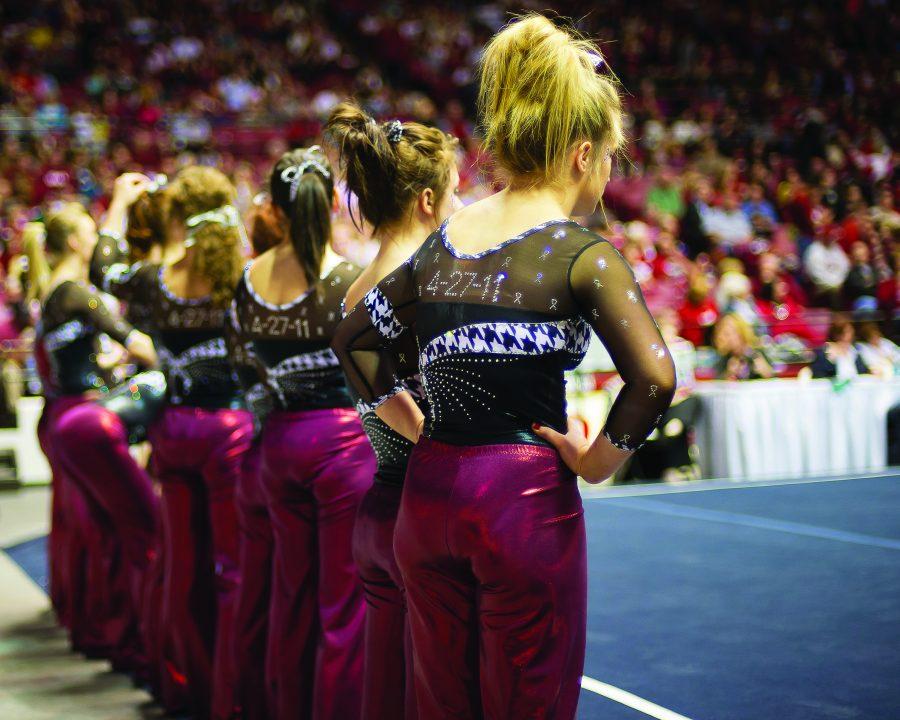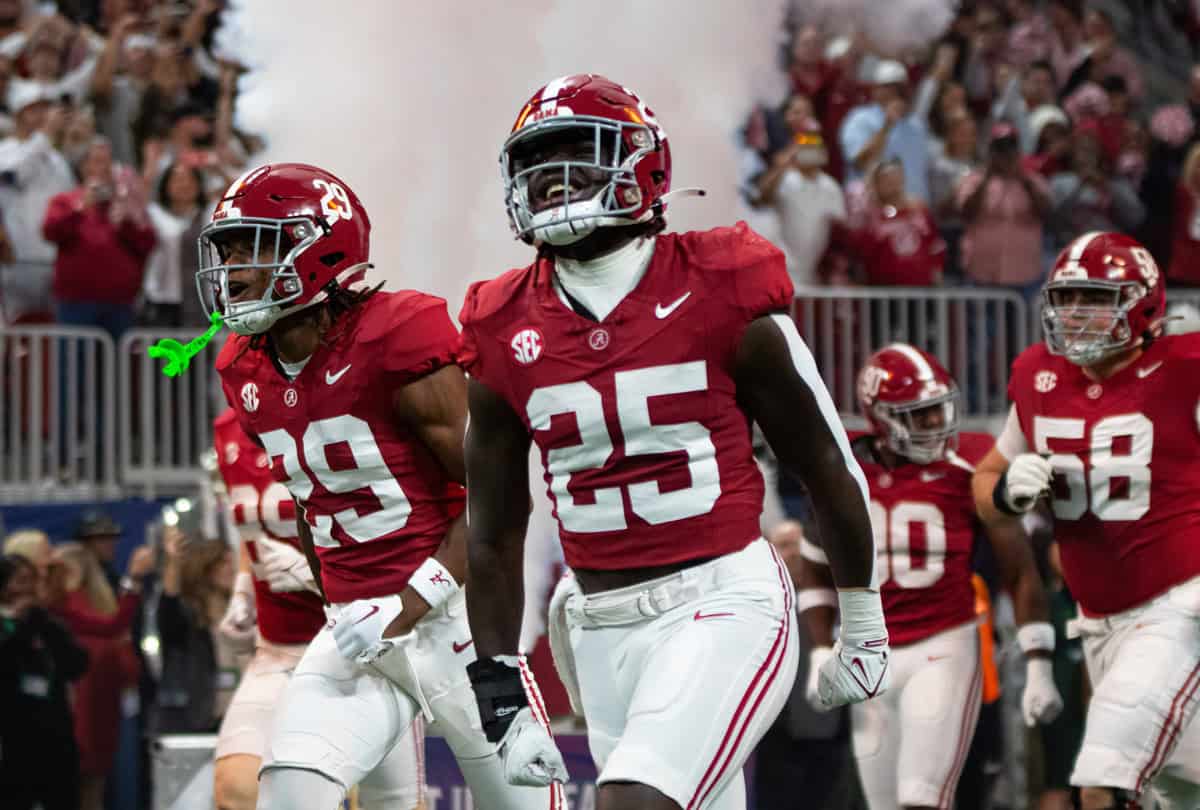Alabama pitcher Nathan Kilcrease was playing Tiger Woods PGA Tour 2011 with his roommates when the weather report on the other television got his attention.
The weather forecaster told him to take cover – an EF4 tornado was headed right for his neighborhood.
Kilcrease pulled out his phone and called his father.
“I don’t ever want to have to call and tell you this, but just in case I don’t get to tell you, I love you,” Kilcrease said. “If I make it, I’m going to call you as soon as I can afterwards.”
Tornado sirens sounded, and at 5:10 p.m. the skies above Tuscaloosa were ominously black. It sounded like a train was on the way.
Silence followed.
According to the National Weather Service, the tornado that struck Tuscaloosa on April 27, 2011, was one of 62 confirmed tornadoes that hit the state in what was referred to later as a super outbreak. When the storms passed and the damages were assessed, over 100 people across the state were dead and many more were injured.
*****
The phone was ringing. Parents were calling about their children.
Alabama baseball coach Mitch Gaspard left his home by Lake Tuscaloosa and headed for the school shortly after the storm passed. He knew it was bad the instant he got back on campus.
“I remember seeing students just walking kind of aimlessly in the streets and just on the campus just really with no direction, not knowing what has happened,” Gaspard said.
He stood in front of his team that morning and recited a speech he’d given countless times before. In it, he warned the guys of the impending storm and told them what to do and where to go if it got bad.
Women’s tennis coach Jenny Mainz had given a similar announcement to her own team earlier that day. When the storm hit, she found herself in the bathtub, her dog Nelly beside her and a mattress over their heads.
“It was eerie; it’s hard to explain the day,” Mainz said. “It’s almost like you knew something was coming and you’re anticipating it, and you don’t know how bad it’s going to be.”
Mainz had heard meteorologist James Spann’s warnings that this storm was to be taken seriously, but she wasn’t prepared for what she saw.
It was like a scene from a movie played out before her eyes. The storm treated trees like toothpicks, concrete like balls of paper, and plenty of both were littered around town.
Mainz said despite the destruction, DCH somehow remained relatively untouched. Prior to the storm, buildings and trees obscured the hospital from view, but the storm removed all obstructions man-made or otherwise, leaving DCH clearly visible to Tuscaloosa residents.
*****
Somewhere in the Patterson household, a phone was ringing.
Then-gymnastics coach Sarah Patterson looked around her home. There were several faces she didn’t recognize. It was exactly the way she wanted it.
“[In the days after the storm], our home just became a place – a safe place where people could come,” Patterson said. “We had students at our house that actually I didn’t know who they were, but we just opened it up that way. [It] became a place where I cooked, washed clothes, everyone came over, slept a little bit, ate and then went back out to try and help.”
It was easy for Patterson to devote herself to helping the community now. She knew her team and her daughters were safe and accounted for.
“I’ll never forget because once the tornado hit, it took us an hour and 18 minutes to find every athlete on our team and our daughters,” Patterson said.“If I had to define one of the most difficult days in my 36-year career, it would be navigating through April 27, 2011.”
With the cell phone network stressed to the breaking point, other coaches’ attempts to track down their missing athletes took even longer.
Gaspard found half of his baseball team seeking shelter at Coleman Coliseum with other athletes, including Patterson’s daughter Jordan, an Alabama softball player, but at 7 p.m. he was still unable to account for five of his players. When the coaches couldn’t reach the missing players by phone, they began to walk.
Shortly before 9 p.m., Gaspard was finally able to breathe a sigh of relief. About a dozen of his players had damaged cars and a few lost their homes entirely, but all of them had survived the storm.
“You feel so blessed that your family’s okay and people that you’re involved with [are okay], but then you have a heavy heart for the people directly involved that lost lives and injuries and those things,” Gaspard said. “[Then] you just want to do what you can to lend a helping hand, and you hope you can do something for somebody that makes an impact on their life.”
*****
The phone in Kilcrease’s hand was ringing.
It had been over two hours since he had spoken to his father, but he finally got ahold of his parents. He told his dad he was fine, but he didn’t have time to talk long. People needed help.
“[Some people] had their house completely torn apart, and I’m not going to go back to my house when somebody’s out in the street like that,” Kilcrease said. “I’m going to help them as much as I can, and there’s not much I can do.”
Kilcrease and his friends spent hours assisting with the cleanup efforts. The next morning Gaspard split the team up and sent Kilcrease’s group to assist with cleanup efforts at teammate Jon Kelton’s house.
While the team was helping Kelton clean up his house, a woman, Ashley Mims, arrived at the house across the street. When Kilcrease learned that her daughter, Loryn, had died in the home, he offered to help her retrieve some of Loryn’s belongings.
Mims couldn’t thank him and his teammates enough when he emerged with the white dress she so desperately wanted.
Kilcrease wished he could have done more, but he found himself back on a pitcher’s mound in Starkville, Mississippi, less than 72 hours after the storm hit.
“We were a team that weekend that understood what we were playing for, and with that in mind, you weren’t going to be denied,” Kilcrease said. “We tried to use the season there; we tried to give the city some hope so as we’re playing that season, we’re trying to play for the city of Tuscaloosa – for everybody whose life it impacted – and give ‘em something they can come to and get away from it at least for two hours of the day.”
Baseball wasn’t the only sport that had a season to finish in the wake of the destruction. Mainz’s tennis team wore houndstooth ribbons in remembrance of the tornado when it competed at the NCAA championships on May 14, 2011.
“It was an honor [and] a privilege to go out and do something that we love in honor and to support and in recognition of [those affected],” Mainz said. “When you have a cause, when you’re playing for somebody that’s sick or you’re playing to keep somebody’s job, I mean it’s a whole different ball game, because it’s your why. Well, our why was Tuscaloosa, the people, the community, the spirit to kind of uplift and raise everybody up, and we competed with that in our hearts.”
The Alabama gymnastics team wrapped up its season 11 days before the tornado struck Tuscaloosa with a national championship victory, so the team had to wait almost an entire year until it could compete again.
Months passed, but Patterson’s team didn’t forget. Instead, the tragedy became a driving force that powered the team to win its sixth national championship in 2012.
In the 2012-13 season, four different teams – football, softball, gymnastics and women’s golf – secured national championships, a first in school history.
“I feel like our athletes the next year were on a mission for our community, and if you talk about you need an intangible to win a national championship, that was our intangible,” Patterson said. “I think those championships were huge in the recovery of this community.”
*****
Gymnastics coach Dana Duckworth’s phone was ringing. She was discussing the cleanup efforts with her friend Donna Benjamin.
Even now, the most vivid memories Duckworth has of the tornado are not the dark skies or the destruction, but the way the community rallied together in the days, weeks and months that followed.
“One of my most memorable moments was when I was serving food to the firemen and police officers, and they were so grateful and so appreciative, and I’m sitting here thinking, ‘No, I’m appreciative of you!’ ” Duckworth said.
Duckworth hired babysitters for her children as much as possible, but eventually she had take a break from the cleanup efforts to be with her kids. On the phone with Benjamin, the two discovered a way they could continue to give back for years to come.
The two launched Read Bama Read with an original goal of restocking the libraries of three schools that lost their books due to the storm. Thanks to the pair’s efforts, the libraries of Alberta Elementary, University Place Elementary and Holt Elementary were restocked, but Read Bama Read didn’t stop there.
It continues to provide local schools with books, and every time books are donated to schools, the tornado is mentioned. But Read Bama Read does more than preserve the memory of one of the darkest times Tuscaloosa has ever seen. It also preserves the sense of community that Duckworth and so many others came to treasure.
“What was so amazing is that instead of the city becoming weak, instead of the city waiting to get help, it was like everybody and their brother, strangers you didn’t know, friends, whoever, everyone started helping everybody,” Duckworth said. “It was like the Bible was being lived.”
Five years may have passed, but the effects of the storm are still visible to those like Duckworth and Patterson who know where to look – a twisted treetop here, a new business there. For those that experienced the storm, it doesn’t feel like much time has passed at all.
Patterson said as a coach she never wanted to get so caught up in work that she forgot the people who were affected by the storm. She made a point to expose herself to those parts of town on a regular basis. Even now in 2016, she thinks regularly of the victims and their families who are still suffering.
Tuscaloosa proved something in the aftermath of the storm, but there’s still work to do.
“The way this community rallied – I think we proved in so many ways that we are a championship community,” Patterson said. “[Now] I feel like our students and our university population still need to remember what transpired and remember that there are still people that need help and are still recovering.”
Kilcrease doesn’t think Tuscaloosa will every truly completely recover from the storm. He’ll certainly never forget the look on Mims’ face when she tracked him down at the 2011 SEC tournament over a month after he gave her that white dress.
She had to see him one more time. Kilcrease could see the sadness in her eyes. He knew seeing him reminded her of her daughter’s death.
She embraced him and handed him a note thanking him once again for his help retrieving her daughter’s belongings.
“The way she embraced me – it was a special moment for me,” Kilcrease said. “That I’ll remember for the rest of my life.”







